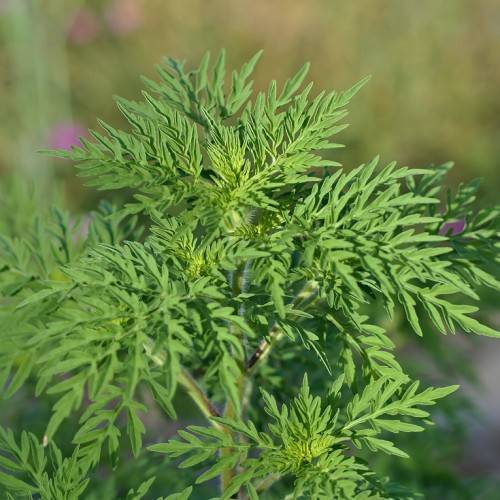
Annual Ragweed
Ambrosia artemisiifolia
Also Known As - Wild Tansy,Hog WeedWatering:
Average
Hardiness Zone:
Flowers:
Flowers
Sun:
Sun, Partial Shade
Soil:
Clay, Sand
Leaf:
Yes
Growth Rate:
High
Poisonous To Humans:
Yes
Poisonous To Pets:
Yes
Drought Tolerant:
Yes
Salt Tolerant:
Yes
Invasive:
Yes
Care Level:
Medium
watering
Annual Ragweed (Ambrosia artemisiifolia) needs to be watered regularly during the growing season for best growth. The soil should be kept evenly moist, but not water-logged. Water when the top few inches of soil are dry to the touch. When the plant begins to flower, reduce the water to about half the amount you had been providing. After the flowering has ended, water the plant as needed. Watering should be done in the morning, so the leaves dry in the sun. During the hot summer months the plants may need to be watered twice a week or more depending upon the weather conditions. In cooler temperatures, once a week should be adequate.
sunlight
Annual Ragweed (Ambrosia artemisiifolia) thrives in full sunlight for best growth and reproduction. It prefers 8 to 12 hours of direct sunlight per day, which is typically available during early morning and late afternoon hours in the spring and summer in most parts of its range. The plant will still grow well under partial sun, but might not produce as much seed or be as densely populated. If planted in early spring, Annual Ragweed will usually have plenty of sunlight throughout the summer months which is when it needs the most exposure.
pruning
Annual Ragweed (Ambrosia artemisiifolia) should be pruned in late winter or early spring just before it starts to bloom. Pruning should be done lightly; only about 1-third of the plant should be cut off at a time. This will encourage lateral branching and help to prevent the plant from becoming overgrown. It is important to prune the plant before it produces its yellow flowers, otherwise it can become difficult to control the plant’s growth. Pruning should be done in areas that are easily accessible; you may need to move ladders or use equipment to access higher parts of the ragweed. After pruning, it is important to dispose of the unwanted foliage properly; compost piles should be kept far from other plants and away from human and pet activity.
